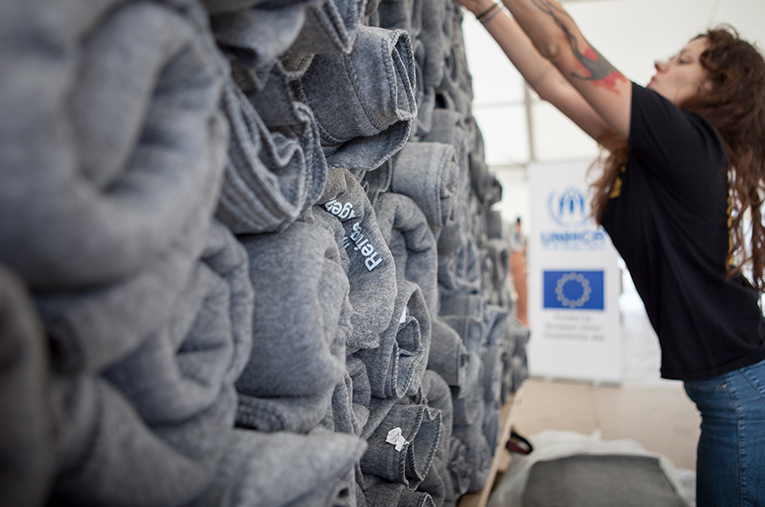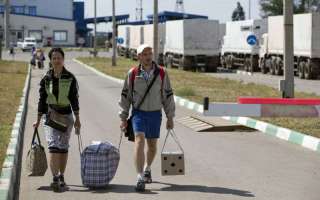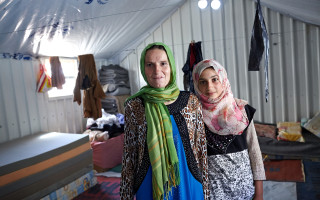
A young Syrian refugee boy, Omar (11 years old) standing outside a tent covering his face to avoid the cold in Bekaa, Lebanon.
The coming winter means many refugees face life-threatening danger from freezing temperatures, snow and winds.
When winter hits and temperatures drop, refugees are generally the worst affected, stripped of the protection of home and often living in flimsy makeshift shelters. The freezing temperatures, rain and snow storms that sweep vast areas of the world, including many parts of the Middle East and Europe, add yet another obstacle in their struggle to survive. Ensuring families are equipped to survive the winter becomes critical from November onwards in many countries, and for UNHCR, early planning and preparation are essential to be able to deliver an efficient response before millions of refugees are exposed to freezing temperatures.

The first winter storm of 2016 brought snow and cold conditions to thousands of Syrian refugees already living in hardship in Lebanon.
5 ways UNHCR puts your donation to work supporting refugees during winter
1. By identifying the most vulnerable:
We identify people who might be more vulnerable to the cold and the elements, including the elderly and children, to ensure they receive the care they need.

A worker stacks a recently arrived shipment of winter blankets at Eleonas refugee camp in Athens. UNHCR image
2. By distributing winter clothing and blankets
To help keep refugees warm and dry, UNHCR distributes raincoats, sleeping bags, thermal blankets and other basic relief items.
3. By weatherproofing and insulating shelters
In Europe, this past winter, UNHCR’s winterization strategy focused on insulating shelters and sanitation facilities and providing vital winter items, hot food and drinks as well as transportation to reception centres. For months, Greece, the western Balkans and Central European countries have seen a large influx of refugees and migrants. UNHCR and partners worked to respond to this growing humanitarian crisis, rapidly addressing the winter needs of those arriving in or on the move across the continent
4. By providing cash assistance to help refugees through the winter
This past winter, UNHCR distributed cash to refugees, especially those in urban areas, so they could buy much needed items like fuel for heating and warm clothing. Cash is used as a flexible way to complement other types of assistance and cover the unaddressed needs of the most vulnerable
5. By monitoring and forecasting winter weather
In the depths of UNHCR’s headquarters in Geneva, there is a small conference room called the “Winter Cell,” where a team of six monitor weather forecasts for UNHCR to be able to assist the refugees most vulnerable to harsh winter conditions. Here trends are identified, problems are flagged and hurdles are foreseen, to determine where best to deploy its resources.





